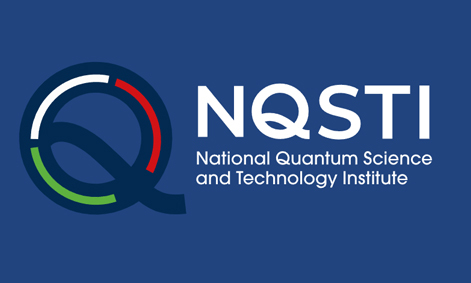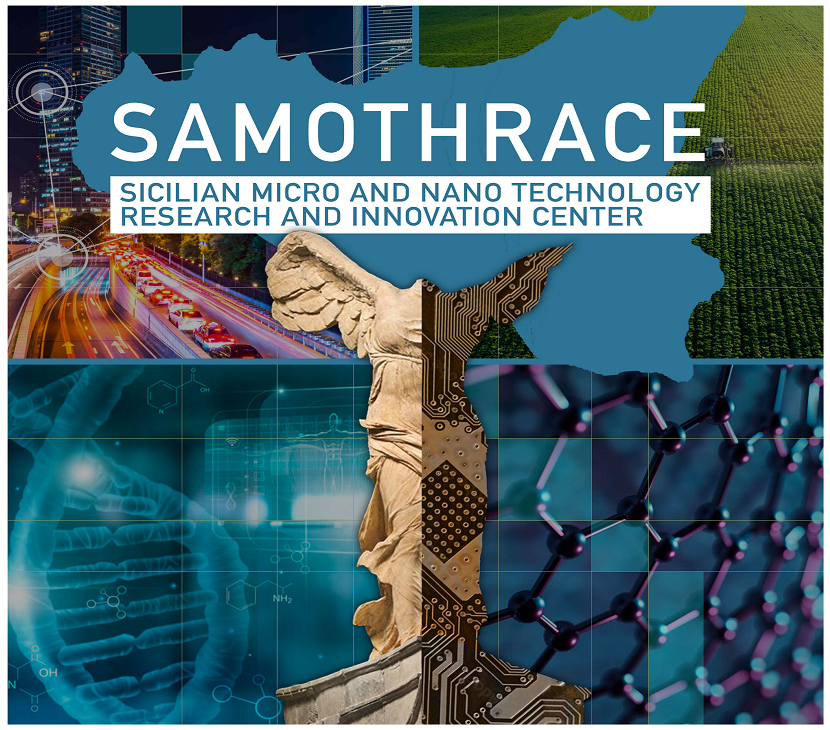
Status: ongoing (01 Sep 2019 – 29 Feb 2024) – Duration: 4.5 years
This is an MSCA ITN project composed by 14 Beneficiaries and 9 Partner Organisations from 9 different countries, and focuses on experimental, theoretical and computational aspects of active matter. The aim of the network is to train a new generation of physicists and engineers with the scientific insight and managerial skills to harness active matter at mesoscopic and nanoscopic length-scales and to exploit it in high-impact applications (e.g. the design and fabrication of biomimetic materials, the targeted localization, pick-up and transport of nanoscopic cargoes, drug delivery, bioremediation and chemical sensing).
Funding Institution: European Commission, Program H2020-EU-1.3 Excellent Science- Marie Sklodowska-Curie Actions
Contact person: M.A. Iatì and O. M. Maragò
Other people involved: M. G. Donato, A. Foti, P. G. Gucciardi, D. Bronte Ciriza, A. Magazzù.
Website: active-matter.eu
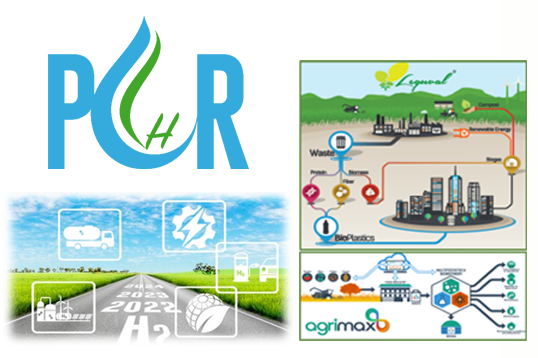
AdP H2- Ricerca e sviluppo di tecnologie per la filiera dell’idrogeno
Status: ongoing (since Jun 2022 – Dec 2025) – Duration: 3.5 years
ERC sectors: PE – Physical Sciences and Engineering (subfields: PE4_18 Environment chemistry, PE4_15 Photochemistry, PE8_6 Energy processes engineering , PE8_11 Environmental engineering)
Hydrogen represents an important energy vector during the energetic transition taking place in these years. As part of the MEES Hydrogen Project, CNR-IPCF, in its three units, will be involved in different activities with the aim to develop innovative materials, processes and technologies for the production of hydrogen, the improvement of the reliability, efficiency, flexibility and resilience of the national energy system.
In particular, main project goals are:
- prepare highly efficient photocatalyst and photoelectrocatalyst materials and optimize synthesis methods with low environmental, energy and economic impact and potentially scalable at an industrial level for the fabrication of devices (BARI).
- development of sustainable biological processes and bioreactors for the production of hydrogen with photosynthetic bacteria / microorganisms from by-products and biomass of the agro-food industry(BARI).
- hydrogen production through photocatalysis and photoelectrocatalysis processes and liquid hydrogen carriers obtained from the photochemical and photoelectrochemical conversion of CO2 and H2O (MESSINA).
- development of innovative components such as electrodes with low or no content of precious metals and advanced membranes for polymeric fuel cells with proton and anionic electrolyte (PISA).
- direct conversion of biomass into hydrogen: development of materials for pyrolysis and gasification of biogenic materials and experimentation in catalytic microreactors for the production of green hydrogen (PISA).
- study of methodologies based on artificial intelligence and energy management algorithms to improve the interface with the hydrogen infrastructure network (MESSINA).
Funding Institution:This research was funded by the European Union – NextGeneration EU from the Italian Ministry of Environment and Energy Security POR H2 AdP MMES/ENEA with involvement of CNR and RSE, PNRR – Mission 2, Component 2, Investment 3.5 “Ricerca e sviluppo sull’idrogeno”
Contact person: G. Calogero
Other people involved: D. Spadaro, M. Lanza, M. Latino, R.C. Ponterio, S. Trusso, G. Cassone, M.G. Bernava, R. Comparelli, M. Trotta, S. Bronco, G. Barcaro, L. Ricci, C. De Monte, L. Arrighetti.
Field of Specialization: Energy
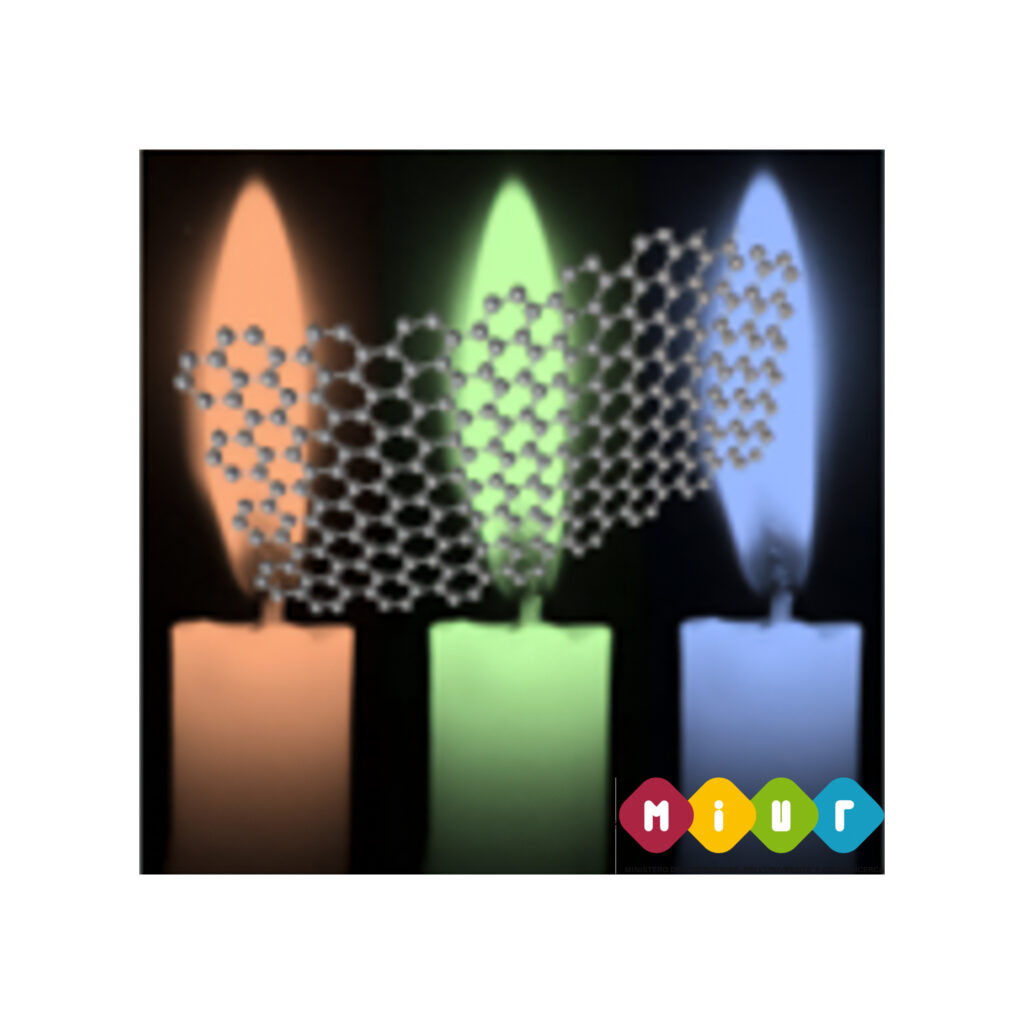
CANDL2 CArbon NanoDots for Light emitting materials and Lasing applications
Status: ongoing (since September 2019) – Duration: 4 years
status: ongoing/closed (October 2017 – September 2019)
The project aims to explore the potential of carbon dots both in LEDs and in tunable solid-state lasers. Purposely synthesized CDs will be embedded in sol-gel hybrid organic-inorganic matrices, to fabricate nanocomposites optimized for lighting and lasing. The structure, the chemo-physical properties and the host-guest interactions in the nanocomposites will be studied through a combination of optical-structural characterization, atomistic modeling and innovative synthesis.
Funding Institution: PRIN Bando 2017 Prot. 2017W75RAE – Ministero dell’Università e della Ricerca
Contact person: M. Striccoli
Other people involved: A. Panniello, G. Minervini, A. Madonia, M. L. Curri
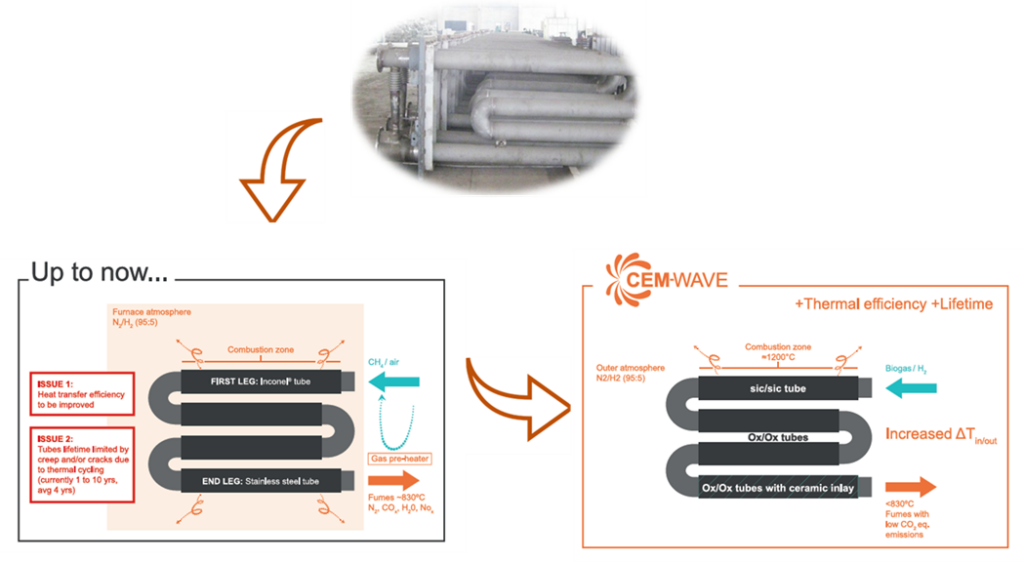
CEM-WAVE - Novel Ceramic Matrix Composites produced with Microwave assisted Chemical Vapour Infiltration process for energy-intensive industries
Status: ongoing (since October 2020) – Duration: 3.5 years
ERC sector: Physical Sciences and Engineering
The goal of CEM-WAVE is the introduction of an innovative Ceramic Matrix Composites (CMCs) production process, based on Microwave-assisted Chemical Vapour Infiltration (MW-CVI) technologies. This novel proposed process will extremely reduce processing costs, thus making CMCs sustainable for process industries in energy-intensive sectors such as steelmaking. In more detail, CEM-WAVE aims at validating, in a radiant tube furnace, a small scale CMC-based tube, substituting the Inconel/Stainless steel alloys currently employed.
Funding Institution: Horizon 2020 programme (H2020-NMBP-ST-IND-2020-singlestage) – LC-SPIRE-08-2020 Novel high performance materials and components (RIA)
Contact person: Prof. Andrea Lazzeri (Department of Civil and Industrial Engineering – University of Pisa), associated of IPCF
Other people involved: G. Annino, R. D’Ambrosio, A. Cintio
Website: cem-wave.eu/

Circular design for natural fibers
Status: ongoing (April 2023) – Duration: 2 years
Subproject within the Piano nazionale di ripresa e resilienza (PNRR) – Partenariato Esteso “3A-ITALY”, tematica “11. Circular and sustainable Made-in-Italy”
The project focuses on exploring and improving the use of natural fibrous by-products, natural fibrous materials and local natural fibrous waste production chains (e.g., textile, agro-industrial, livestock, forestry), by companies involved in the disposal of fabrics, as well as by the rediscovery of local production of “forgotten” fibers. The aim of the project is the production of new materials, bio-inspired composite materials, components, semi-finished products, products and services for the textile and clothing sector, furniture and construction sector.
Funding Institution: PNRR – Ministero dell’Università e della Ricerca (MUR)
Contact person: L. Ricci
Other people involved: S. Bronco, C. De Monte, L. Arrighetti
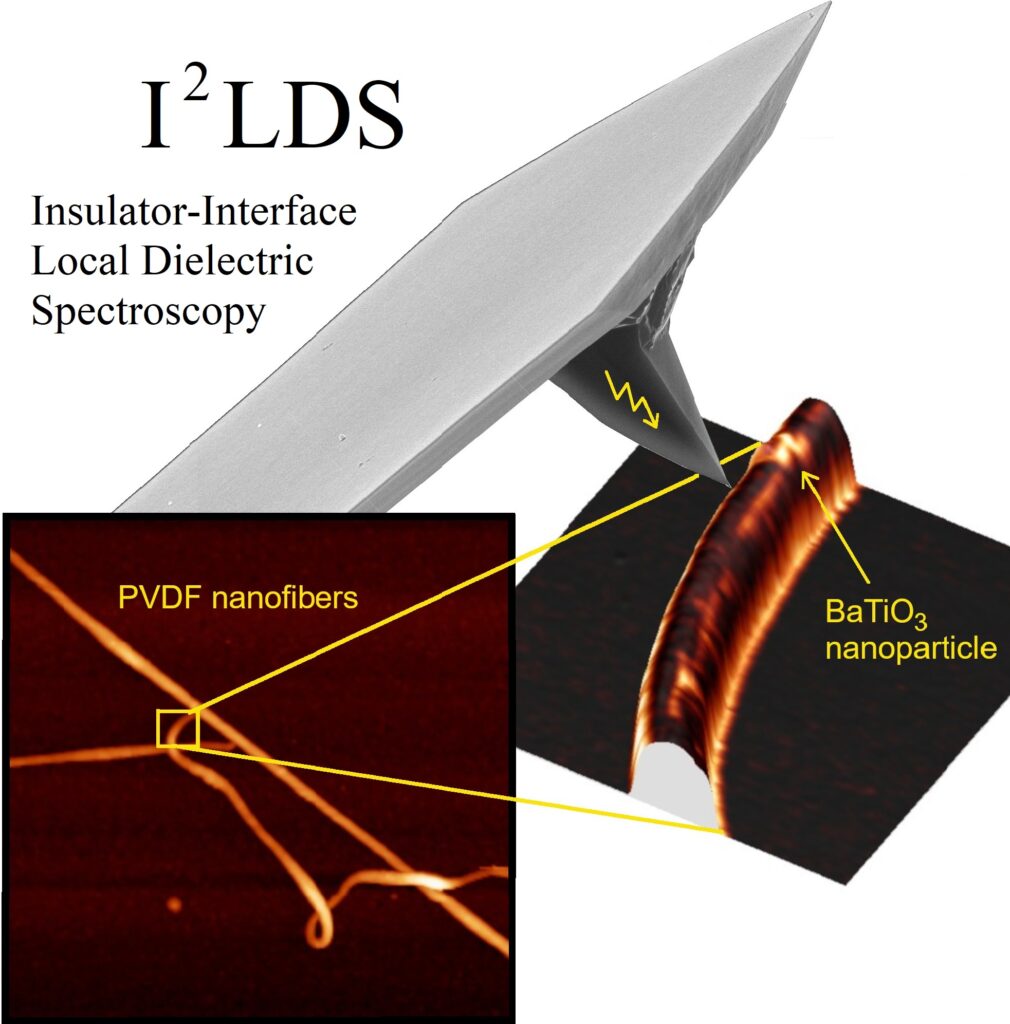
Local Dielectric Spectroscopy at the Interface of Polymeric Nanocomposites (I2LDS)
Status: ongoing (since October 2022) – Duration: 3 years
The project is aimed at investigating the behavior of insulating polymers, subjected to extreme stress conditions, close to the interface with electrodes as well as of nanoinclusions added for improving their performance, by means of super-resolved microscopy techniques named electrostatic force microscopy (EFM). The microscopes available for this project are capable to investigate functional properties of materials, in addition to their morphology, with a spatial resolution of a few nanometers, that is at the current state-of-the-art concerning the measurement of local electric properties.
Funding Institution: Office of Naval Research Global
Contact person: M. Labardi

Mission Innovation – piattaforma Italiana Accelerata per i Materiali e l’energia – IEMAP
Status: ongoing (since May 2021) – Duration: 3 years
Analisi e Screening di materiali per elettrodi e trasportatori di carica per dispositivi integrati fotovoltaico-accumulo a 2 terminali; Ottimizzazione di tecniche di deposizione facilmente automatizzabili e struttura di elettrodi per dispositivi integrati fotovoltaico-accumulo a 2 terminali; Realizzazione di dispositivi integrati fotovoltaico-accumulo a 2 terminali
Funding Institution: Ministero Sviluppo Economico
Contact person: M. Trotta and M.Striccoli
Other people involved: M. Dell’Edera
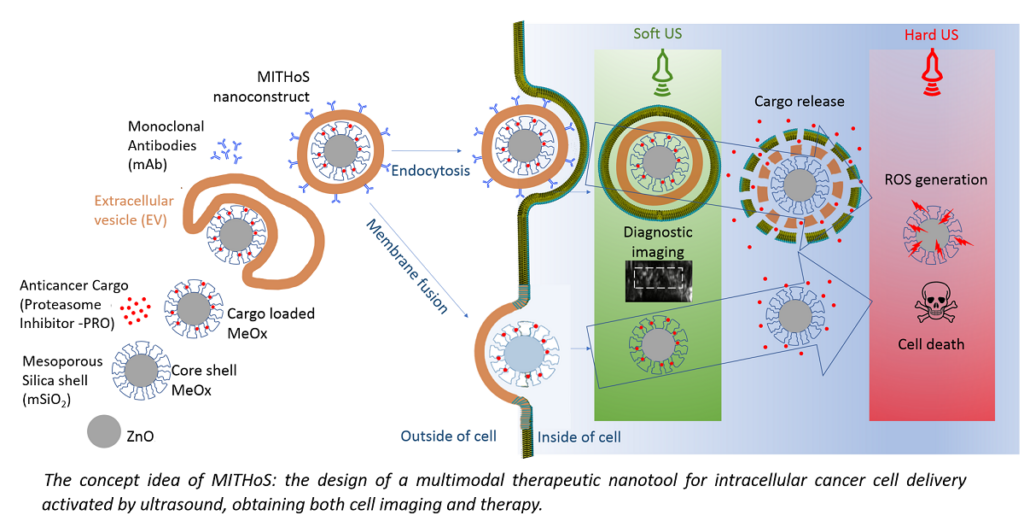
Status: ongoing (since March 2022) – Duration: 3 years
ERC sectors: PE – Physical Sciences and Engineering (subfields: PE4_4 Surface science and nanostructures, PE4_6 Chemical physics, PE4_11 Physical chemistry of biological systems)
The goal is the development of a Multimodal Innovative THeranostic nanoSystem (MITHoS) capable of covering the gap between the present anticancer nanomedicine tools and the clinical requirements. MITHoS is a hybrid theranostic nanosystem: an ultra-sound responsive core-shell nanoparticle, coupled to a pharmaceutically-relevant anticancer cargo, embedded in a cell-derived lipid bilayer shell, and finally equipped by targeting ligands. MITHoS will be validated against multiple myeloma. Cutting-edge molecular simulation techniques will be used to characterize all the involved nano/biointerfaces and develop predictive computational tools for driving the experimental investigations. The experimental synthesis, characterization, and test of the MITHoS nanosystem will evolve from simple model systems to more complex nanostructures towards the final goal of in-vivo device testing.
Funding Institution: MUR (Ministero Università e Ricerca) – PRIN 2020
Contact person: G. Barcaro
Other people involved: S. Monti (CNR-ICCOM), C. Trouki (Research Fellow @CNR-IPCF)

SVILUPPO E OTTIMIZZAZIONE DI UN SISTEMA GENERAL PURPOSE MODULARE PER IL MONITORAGGIO STRUTTURALE (MONVIA)
Status: ongoing ( since Aug 2020 ) – Duration: 3.5 years
ERC sectors: PE – Physical Sciences and Engineering (subfields: PE5_1 Structural properties of materials, PE8_8 Ingegneria dei materiali (biomateriali, metalli, ceramiche, polimeri, composti, …), PE7_8 Reti (di comunicazione, di sensori, di robot, ecc.))
Development of a general purpose modular system, for the monitoring, control and management of structural works (such as viaducts, dams, historic buildings, industrial plants, etc.), through the integration of a network of multifunctional sensors (from an IoT perspective ), with a view to developing prevention and risk reduction actions. The project also envisages the development and testing of Innovative Sensors (Smart Sensors), through the use of modern nanotechnologies.
Funding Institution:Italian Ministero dello Sviluppo Economico (MISE)
Contact person: D. Lombardo
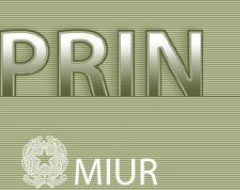
Mussel-inspired functional biopolymers for underwater adhesion, surface/interface derivatization and nanostructure/composite self-assembly (MUSSEL)
Status: ongoing ( 29 Oct 2019 – 29 Oct 2023) – Duration: 3.0 years
ERC sectors: PE – Physical Sciences and Engineering (subfields: PE5_16 Supramolecular chemistry, PE5_17 Organic chemistry, PE5_7 Biomaterials, biomaterials synthesis)
The MUSSEL project involves 6 Research Units. The aim of the CNR Research Unit (composed of different Institutes) is the study of Polydopamine structure and Polydopamine nanocomposites and the determination and elucidation of adhesion and cohesion mechanisms by means of different experimental techniques. IPCF in particular, contributes to the research with consolidated expertise in nanostructured materials through light scattering and time-resolved fluorescence spectroscopy.
Funding Institution: MIUR – PRIN 2017
Contact person: V. Villari (referente IPCF per l’Unità di Ricerca IPCB di Pozzuoli (NA))
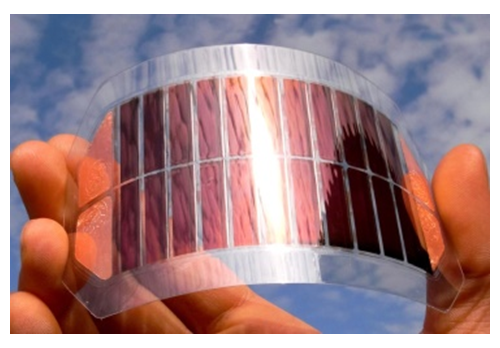
Efficient ships through the use of innovative and low Carbon technological solutions (NAUSICA)
Status: ongoing (since Jun 2021 – May 2024) – Duration: 3.0 years
ERC sectors: PE – Physical Sciences and Engineering (subfields: PE4_18 Environment chemistry, PE4_15 Photochemistry, PE8_6 Energy processes engineering , PE8_11 Environmental engineering)
The PON NAUSICA project aims to implement advanced technologies for efficiency and intelligent management of vessels reducing the environmental impact of fleets and decrease the operating costs of operators in the maritime transport sector. In particular, CNR-IPCF Messina activities are focused on the development and demonstration of advanced materials, devices and innovative technologies for the production and storage of energy from renewable sources in order to achieve a progressive decarbonisation of the energy system on-board and to improve environmental sustainability. The goal is to demonstrate on-board prototypes on an appropriate scale, capable of operating both in outdoor and indoor conditions with diffused light, with conversion efficiencies close to 10% e with an integrated storage system. Solid-state and flexible devices belonging to dye sensitized solar cells (DSSC) will be developed in collaboration with ISMN Palermo and other partners to also achieve high performance in underwater systems.
Funding Institution: Programma PON «R&I» 2014-2020 – cod.ARS01_00334- Ministero dell’Università e della Ricerca(MUR)
Contact person: G. Calogero
Other people involved: D. Spadaro, M. Lanza and S. Grasso.
Field of Specialization: Sustainable Mobility
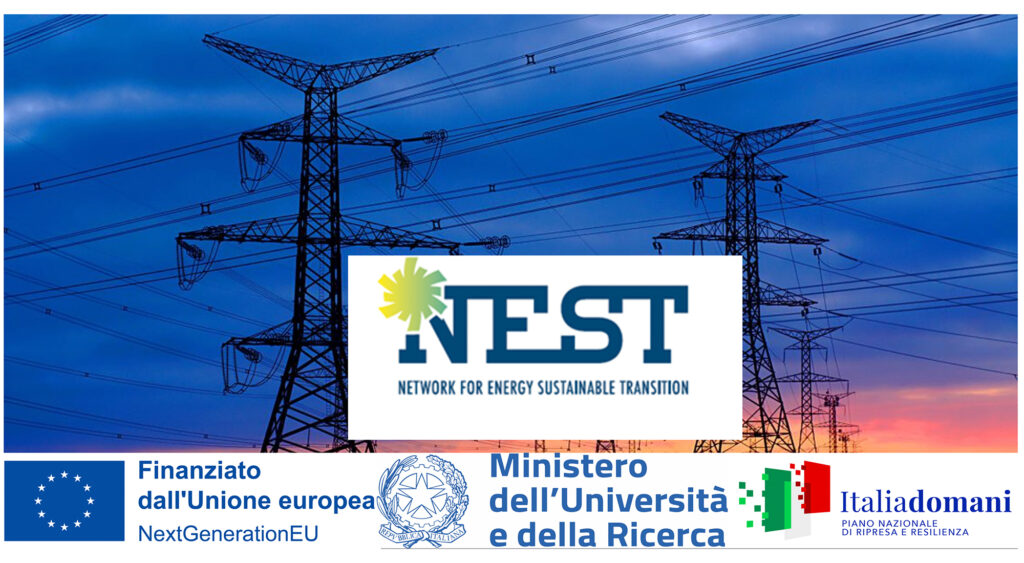
“Nest - Network 4 Energy Sustainable Transition”, Parternariato Esteso – PE0000021
Status: ongoing (since November 2022) – Duration: 3 years
The project aims to connect the main laboratories and university research groups and the main national research bodies to develop technologies for the conversion and use of renewable sources that should be sustainable, both from an environmental and a social point of view, and resilient for the energy production and distribution, while being less subject to the risks deriving from the current supply system of fossil fuels, basically, oil, and natural gas.
Funding Institution: PNRR –Ministero dell’Università e della Ricerca
Contact person: M. Striccoli
Other people involved: R. Comparelli, E. Fanizza, M.L. Curri, A. Panniello

New-Generation Nanostructured Fluorinated Materials for 19F-MRI and their Biophysicochemical Interactions (NiFTy)
Status: ongoing (since October 2019) – Duration: 3 + 1 years
The aim of Nifty is the development od novel fluorinated tracers and nanosystems, 19F-MRI active, overcoming limitations of conventional agents, paving the way for multifunctional fluorinated nanomaterial (F-NM) based platforms, applicable to different fields of medicine, with the additional possibility to complement dual imaging modalities with therapy
Funding Institution: Ministero dell’Università e della Ricerca (MUR)
Contact person: C. Ingrosso
Other people involved: G. Mandriota, N. Depalo, E. Fanizza, M. L. Curri.
Status: ongoing (since December 2022) – Duration: 3 years
This project targets the creation of the National Quantum Science and Technology Institute (NQSTI), a consortium that (i) will team up Italian entities carrying out competitive and innovative research in the field of quantum science and technology (QST), and (ii) will stimulate future industrial innovation in this field, providing a forum in which novel ideas and opportunities are transferred to companies. In order to ensure a long-term positive effect on the Italian economic growth and development, the whole innovation chain was considered: from the strengthening and coordination of the low-TRL research, to its translation into prototypes, favouring interfacing with industrial needs thanks to strong outreach and continued-education programs. Importantly, the creation and incubation of spin-offs and start-ups that can move research outcomes up in the TRL-ranking are included in the proposal scope with significant resources and a special focus onto the southern regions.
Funding Institution: PNRR – Ministero dell’Università e della Ricerca (MUR)
Contact person: O.M. Maragò
Other people involved: G. Calogero, I. Citro, P.G. Gucciardi, D. Spadaro
website: https://www.nqsti.it/
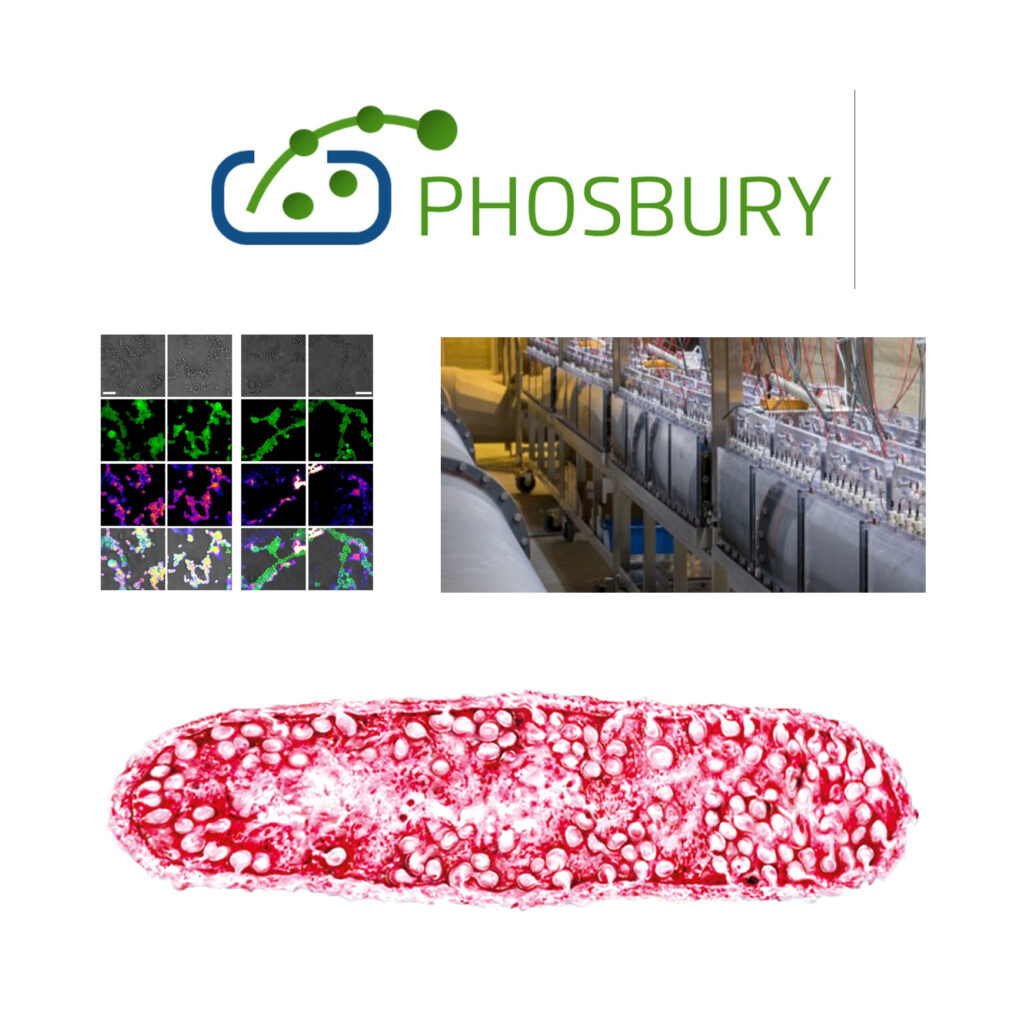
Photosynthetic bacteria in Self-assembled Biocompatible coatings for the transduction of energy – PHOSBURY
Status: ongoing (April 2022) – Duration: 2 years
Improve the electron transfer between the microbe and electrode surface, the bottleneck in existing microbial technologies, by engineering microbes capable of biopolymerizing their own inter-and intra-cellular conductive network. Partners: EPFL – École Polytechnique Fédérale de Lausanne, Svizzera; University of Applied Sciences and Arts West, Svizzera;Consiglio Nazionale delle Ricerche, Italia
Funding Institution: SNSF – Swiss National Science Foundation
contact person: M. Trotta
Other people: R. Labarile, M. Varsalona
Status: ongoing (since October 2022) – Duration: 3 years
La linea prioritaria dell’ecosistema Samothrace rientra nell’ambito dell’area “Digitale, Industria e Spazio” del Piano Nazionale della Ricerca (PNR). L’obiettivo principale è far leva sulla consolidata vocazione del territorio siciliano nel campo della microelettronica e delle micro e nano tecnologie per portarla a un livello più alto e diffuso che possa avere un impatto significativo e tangibile sullo scenario industriale dell’isola e sull’intera società.
Funding Institution: PNRR – Ministero dell’Università e della Ricerca (MUR)
Contact person: P. G. Gucciardi (Environment); R. C. Ponterio (Cultural Heritage)
Other people involved: S. Bernatova, G. Cassone, M. G. Donato, A. Foti, D. Giuffrida, M. A. Iatì, A. Magazzu, O. M. Maragò, D. Spadaro
website: https://www.samothrace.eu/
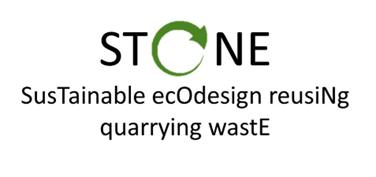
STONE - SusTainable ecOdesign reusiNg quarrying wastE
Status: ongoing (March 2023) – Duration: 2 years
Subproject within the Piano nazionale di ripresa e resilienza (PNRR) – Partenariato Esteso “3A-ITALY”, tematica “11. Circular and sustainable Made-in-Italy”
The STONE project aims at promoting the sustainable use of local stone slurry («Perlato di Sicilia» (Sicily), «Pietra Lavica dell’Etna” (Sicily), «Pietra di Apricena» (Apulia) and «Marmo di Carrara» (Tuscany)) for:
- Process optimization through circular management that could reduce the environmental impacts of waste disposal and valorisation of raw materials at a geo-cluster scale.
- Made in Italy product innovation, high quality and avant-garde advanced/eco materials (also reusing stone waste through biomineralization processes) and components for indoor/outdoor living spaces and temporary housing solutions (e.g., objects, tiles, panels and panels).
- Technological transition with digital methods (eg additive manufacturing) for modular, scalable systems, versatile and controlled production, also with a view to disassembly and reuse at the end of their life.
Funding Institution: PNRR – Ministero dell’Università e della Ricerca (MUR)
Contact person: C. De Monte
Other people involved: S. Bronco, L. Ricci, L. Arrighetti

Winogradski-Inspired Waste to Value – WIWAVA
Status: ongoing (December 2022) – Duration: 2,5 years
A waste-water treatment based on the photo-assisted metabolism of mixed microbial cultures of non-pathogenic photosynthetic micro-organisms deriving from purification or treatment processes of water and organic material for hydrogen production.
Funding Institution: Regione Puglia
Contact person: M. Trotta
Other people involved: G.Mandriota
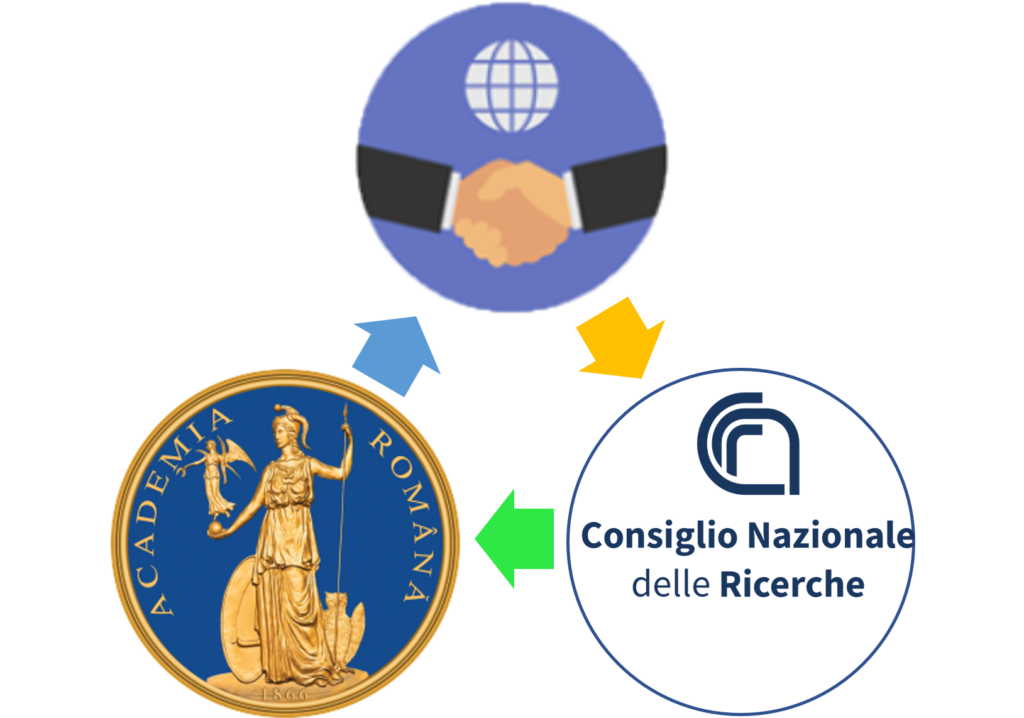
Comparison of CNOSSOS-EU and NMPB methods for road noise modelling in Italy and in Romania
Status: ongoing (since January 2023) – Duration: 2 years
Bilateral agreement: CNR/Romanian Academy (Romania)
For several decades the European community has focused attention on the issue of noise prevention, given its importance as an environmental pollutant. With effects such as negative cardiovascular and metabolic effects, reduced cognitive performance in children as well as severe annoyance and sleep disturbance, noise is the second largest environmental cause of health problems, just after the impact of air pollution. In 2002, the European Commission issued the Environmental Noise Directive with the aim of preventing exposure, outlining a common methodology and studying a path to mitigate the excessive levels to which the population is exposed. Such a common method to model transport and industrial noise has been officially identified in 2015 with the CNOSSOS-EU method, which replaced the previous NMPB interim method. The present collaborative study intends to evaluate the availability of the inputs required for the application of CNOSSOS method in Romania. NMPB and CNOSSOS-EU will be compared in a feasibility study. Then, suitable simplifications for input acquisition in Romania will be evaluated in terms of data accessibility and reliability of the results. An urban area in Bucharest and mitigated scenarios in Italy will be tested and will allow evaluations of mapping methods, even for planning mitigation measures.
Funding Institution: CNR and Romanian Academy
Contact person: E. Ascari (IPCF) – Tudor Sireteanu (Romanian Academy)
Other people involved: L. Fredianelli (IPCF), G. Licitra (University of Pisa), Ana-Maria Mitu (Romanian Academy), Catalin-Andrei Naegoe (Romanian Academy)
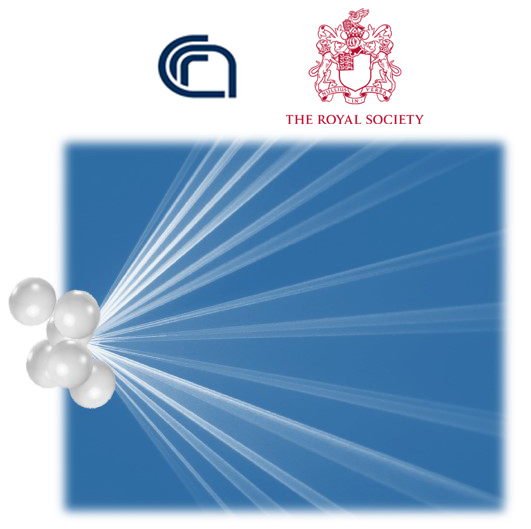
Detection of micro and nanoplastics absorbed in the gut of marine invertebrates by Raman/SERS tweezers
Status: ongoing (since January 2022) – Duration: 2 years
Bilateral agreement: CNR/Royal Society (United Kingdom) – 2022-2023
The project is focused on the detection of micro and nanoplastics absorbed in the intestine of marine invertebrates using Raman optical tweezers in order to increase the knowledge of the factors influencing their fate and behavior inside the intestine and, finally, the bioaccumulation of these contaminants in organisms. This is of paramount importance in assessing the risks of contamination of the wider food web.
Funding Institution: Royal Society
Contact person: P. G. Gucciardi (IPCF) – Tamara Galloway (University of Exeter – UK)

Exploration of the mechanisms of prebiotic synthesis in impact craters
Status: ongoing (since 2022) – Duration: 3 years
Bilateral agreement: CNR/CAS (Czech Republic) – biennio 2022-2023
This project focuses on extensive experimental and theoretical investigations of formamide-based and hydrogen-cyanide- (HCN)-based prebiotic synthesis in post-impact hydrothermal model environments. Firstly, the fundamental Chemistry characterizing relatively simple – but prebiotically relevant – systems in absence of sulphur will be explored. In particular, the reaction mechanisms leading to the formation of non-sulphur biomolecules will be investigated and evaluated with the aim of comprehending their feasibility and plausibility. Furthermore, the Chemistry arising in systems containing either solid, liquid or gaseous sources of sulphur will be investigated along with the reaction mechanisms shaping the complex chemical reaction networks originating from promising reactants toward the synthesis of sulphur-containing prebiotic relevant molecules.
Funding Institution: CNR and Academy of Science, Czech Republic
Contact person: F. Saija (IPCF) – Martin Ferus, (Academy of Science, Czech Republic)
Other people involved: G. Cassone
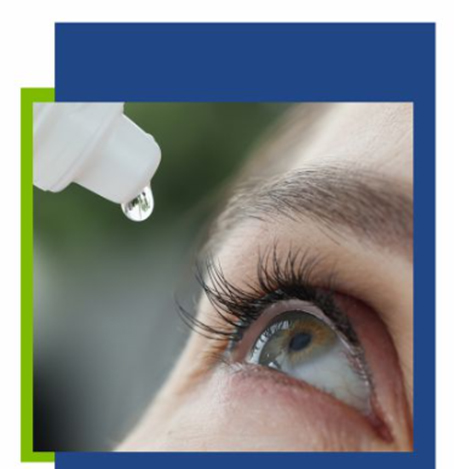
Status: closed (14 Jan 2020 – 30 Jun 2023) – Duration: 3.5 years
The project aims to design and development of two new pharmacological formulations based on povidone iodide (PVP-I) in the ophthalmology sector for the prevention and treatment of bacterial, viral and microbial infections which, if not treated adequately and in time, they can also lead to loss of vision. The active ingredient will be conveyed through an innovative micro/nano particle system able to stabilize them in aqueous solution (eye drops), and to improve their bioavailability in ocular tissues as well as ophthalmic tolerability.
Funding Institution: PO FESR SICILIA 2014-2020. Action 1.1.5
Contact person: G. Lombardo
Other people involved: N. Micali, V. Villari e G. M. Bernava
Website: www.ipcb.ct.cnr.it/Nusteo
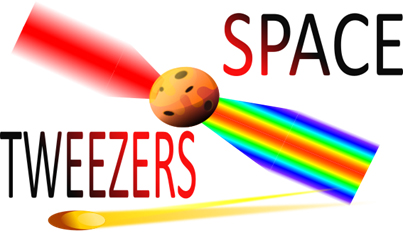
Status: closed (02 Dec 2019 – 15 May 2023) – Duration: 3.5 years
In this research we used OT to trap and spectroscopically characterize extraterrestrial dust particles and/or their analogs. This study gives solid ground for the application of OT techniques to solar system study, e.g., cometary particles analyses and dust particles on Lunar surfaces. Such application is strategic for the “clean” characterization of restricted and unrestricted samples of planetary bodies returned from space missions in curatorial facilities.
Funding Institution: Agenzia Spaziale Italiana (ASI) and Istituto Nazionale di Astrofisica (INAF) through ASI-INAF Initiative “Accordo Attuativo ASI-INAF n. 2018-16-HH.0”
Contact person: O. M. Maragò
Other people involved: M. G. Donato, A. Foti, P. G. Gucciardi, M. A. Iatì, D. Bronte Ciriza, A. Magazzù, S. Marrara, P. Polimeno, A. Saidi (IPCF). P. Zemanek, O. Brzobohaty (ISI-CAS Brno); O. Munoz (Instituo de Astrofisica de Andalucia); G. Volpe (University of Gothenburg); Y.-J. Chen (National Central University; Taiwan)
Website: www.spacetweezers.org

Bifacial Efficient Solar cell Technology with 4 terminal architecture for Utility scale (BEST-4U)
Status: closed (1 Apr 2020 – 31 Mar 2023) – Duration: 3.0 years
ERC sectors: PE – Physical Sciences and Engineering (subfields: PE4_18 Environment chemistry, PE4_15 Photochemistry, PE8_6 Energy processes engineering , PE8_11 Environmental engineering)
The PON Best4U project sees the synergistic interaction of different CNR groups belonging to the DSCTM as regards the construction of 4-terminal solar cells / modules in which the bottom cell is a bifacial type heterojunction Si cell and the top cell is a wide band gap semiconductor cell. CNR-IPCF Messina coordinates activities and results with the aim of fabricate efficient DSSCs cells, thanks to the fruitful collaboration with the ISTEC-CNR Faenza that has developed inks based on TiO2 nanoparticles synthesized by CNR-IPCF Bari through different synthetic techniques (colloidal, hydrothermal or sol gel) and ICCOM-CNR Sesto Fiorentino that has optimized a glass-frit sealant. A set of optimized DSSCs and relative materials have been identified for the scaling up of the cell to large area of 1 cm2 to optimize the best compromise between transparency and PCE that is the goldilocks condition for integration in tandem technology in combination Si solar cells.
Funding Institution: Programma PON «R&I» 2014-2020 ARS01_00519 Ministero dell’Università e della Ricerca(MUR)
Contact persons: G. Calogero and M.Striccoli
Other people involved: D. Spadaro, M. Lanza, E. Fanizza, M. Dell’Edera, M. Giancaspro, C.N. Dibenedetto, A. Panniello.
Field of Specialization: Energy

Status: closed (29 January 2018 – 30 August 2021) – Duration: 3 years, 7 months
ERC sectors: Physical Sciences and Engineering; Life Sciences
The aim of the project is the implementation of bioartificial scaffolds with the potential to serve as acellular patches for in vivo cardiac regeneration. The INCIPIT cardiac patch technology will move this material-based product closer to the market of smart therapies in the cardiovascular field.
Funding Institution: M-ERA.NET 2, Horizon 2020, MIUR-FIRST
Contact person: C. Cristallini
Other people involved: E. Tombari, M. Labardi, L. Gasperini, A. Rizzo, N. Barbani (associated of IPCF)
Website: incipit
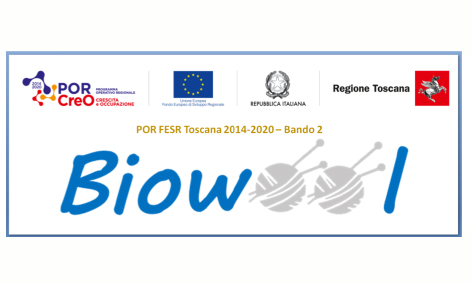
BioWool- Sviluppo di un processo chimico innovativo per riciclare fibre di lana
Status: closed (01 September 2016 – 31 December 2018) – Duration: 2 years and 4 months
ERC sectors: PE5_15 Polymer Chemistry
The idea behind the project consists of a substantial innovation in the field of textile chemistry which will make it possible to obtain synthetic fibers starting from wool fiber waste. In particular, the idea is based on the recovery of industrial wool waste consisting of textile waste, sub-products, combing blousses, waste, fiber and using them for the preparation of new yarns through a dissolution and regeneration process which will be developed in plan. The process will be based on dissolution with ionic liquids (IL), an innovative class of compounds found to be capable of dissolving most natural fibres, including wool, which are instead insoluble in common organic solvents and water.
Funding Institution: POR FESR 2014-2020, Bando 2, Regione Toscana
Contact person: M. Bertoldo
Other people involved: S. Bronco, L. Gasperini, C.A. Massa, A. Rizzo, E. Tombari
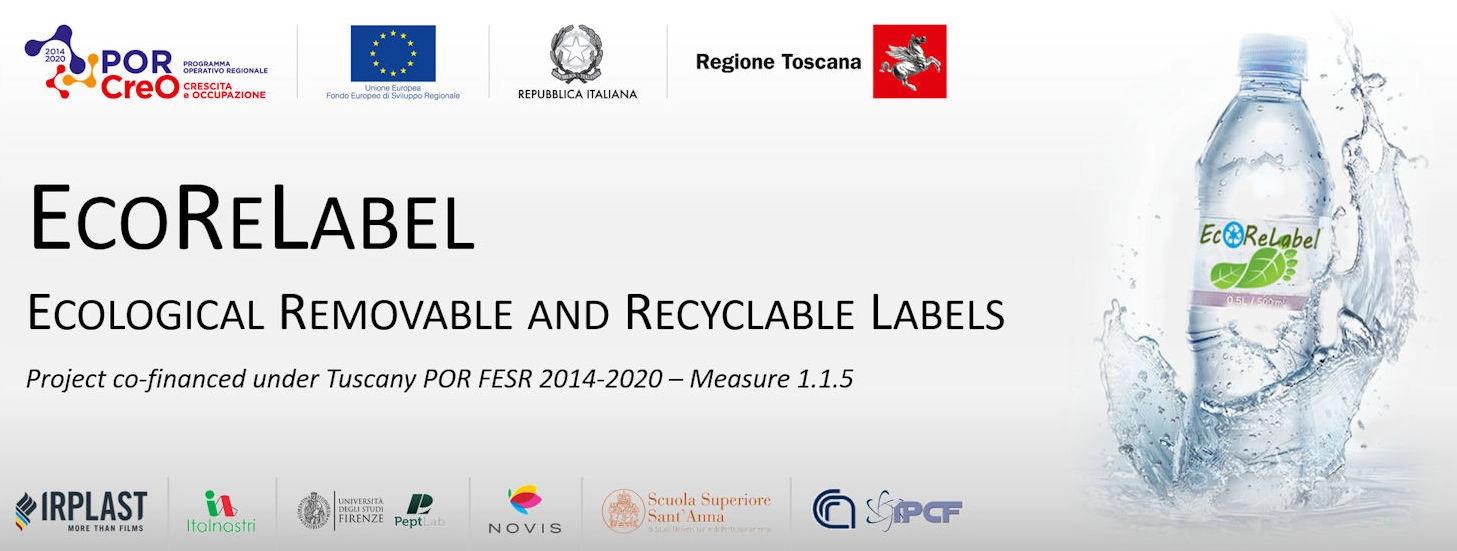
EcoReLabel- Etichette ecologiche distaccabili e riciclabili
Status: closed (12 September 2016 – 31 August 2019) – Duration: 3 years
ERC sectors: PE5_15 Polymer Chemistry
The aim of the project is the development of ecological, removable and recyclable labels. EcoReLabel reflects the European waste policy, which has among its priorities the prevention and the reuse, even before the recycle. The project plans to develop products and methodologies for allowing an easy removal of bottles labels with a sustainable approach. In this way, it will be possible to separately implement the recovery of the materials, with the goal to recycle and/or reuse them.
Funding Institution: POR FESR 2014-2020, Misura 1.1.5, Regione Toscana
Contact person: M. Bertoldo
Other people involved: S. Bronco, N.L. Durante, L. Gasperini, C.A. Massa, A. Rizzo, E. Tombari
Website: ecorelabel
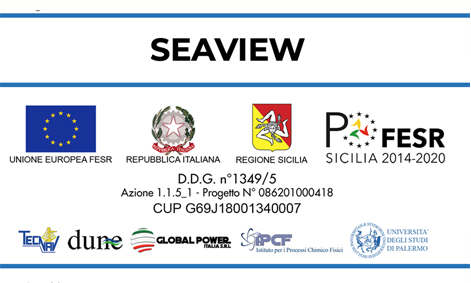
Status: closed (November 2018 – September 2023) – Duration: 5.0 years
The SEAVIEW project aims to design, build and test in an industrial and real environment the demonstrator and prototype of an innovative electronic instrument consisting of an underwater vehicle (Remotely Operated underwater Vehicle ROV) equipped with a three-dimensional stereoscopic video-acoustic sensor. A monitoring system based on the creation of an underwater neural network, which integrates static sensor nodes and mobile devices, will also be tested. The sensor nodes will be multifunctional and will have heterogeneous monitoring capabilities (e.g. they will be equipped with sensors capable of monitoring various environmental parameters, and with video cameras). The sensor nodes will be able to communicate data in real time via a gateway to a remote server, using innovative techniques based on acoustic communication (or radio for the surfaced part).
A system of this type will allow the integration of heterogeneous platforms and technologies. The underwater sensor nodes can be deployed from small boats, and reconfigured remotely in real time.
Funding Institution: EU-funded – FESR (Fondo europeo di sviluppo regionale)
Contact person: A. Irrera (DSFTM)
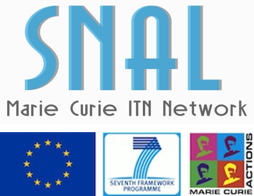
Smart Nano-objects for Alteration of Lipid bilayers - Initial Training Network (Acronimo: SNAL)
Status: closed (Apr 2014 – March 2018) – Duration: 4.0 years
ERC sectors: PE – Physical Sciences and Engineering (subfields: PE4_11 Physical chemistry of biological systems, PE5_7 Biomaterials, biomaterial synthesis); Life Science (subfields: LS1_1 Macromolecular complexes including interactions involving nucleic acids, proteins, lipids and carbohydrates)
The project provide scientific skills, training and career development for early stage (and experienced) researchers in the field of bio-nanotecnology. Combining computer simulations, chemical synthesis, clinical and industrial expertise, physical and biological experiments, it aims to design and develop novel biomaterials, by investigating the interactions of bio-membranes with nano-objects including functional biomimetic polymers, polymeric micelles, carbon nanotubes and polymer therapeutic complexes/conjugates.
Funding Institution: EU-funded – 7th Framework Programme
Contact person: D. Lombardo
List of partners:
– Universitat Rovira i Virgili (URV), Tarragona, Spain (Dr. Vladimir Baulin: Coordinator)
– Institut für Pathologie, Universitätsmedizin Mainz, Germany (Prof. James Kirkpatrick)
– Universitaet Frankfurt, Frankfurt, Germany (Prof. Shahram Ghanaati)
– Institut für Polymerforschung Dresden, Germany (Prof. Jens-Uwe Sommer)
– Cambridge University, Cambridge, UK (Prof. Nigel Slater)
– Imperial College, London, UK (Dr. Rongjun Chen)
– Imperial College London, UK (Prof. John Seddon)
– University of Manchester, Manchester, UK (Prof. Jian Lu)
– CNR – Istituto per i Processi Chimico-Fisici, Italy (Dr. Domenico Lombardo)
– CNRS – Institut Charles Sadron, Strasbourg, France (Dr. Carlos Marques)
– Swinburne University, Australia (Prof. Elena Ivanova)
– Biopharma, UK (Dr. Kevin Ward)
– Unilever, UK (Dr. Massimo Noro)
Website: https://itn-snal.net/
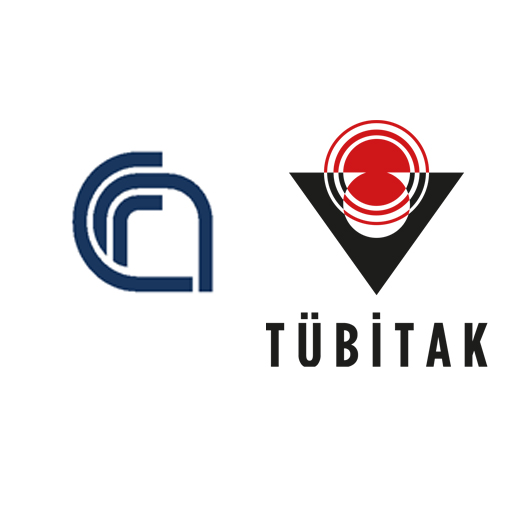
Self-aggregation of active particles with complex shapes into controlled optical potentials
Status: closed (01 Jun 2019 – 31 Dec 2022) – Duration: 3.5 years
Bilateral agreement: CNR/Tubitak (Turkey)
In this project we aim to extend the study on Janus particles to non-spherical active particles, like elongated Janus particles, Janus micro- and nanorods. We explore how the difference in shape crucially affects and determines the self-assembly properties. We aim to study three-dimensional dynamics of (spherical and non-spherical) active particles in a tightly focused optical beam (i.e., optical tweezers), exploring the possibility of their confinement, manipulation, and control of their three-dimensional orientation.
Funding Institution: CNR and TUBITAK-Scientific and Technological Research Council of Turkey
Contact person: O. M. Maragò (IPCF) – Luca Biancofiore (University of Bilkent – TR)

